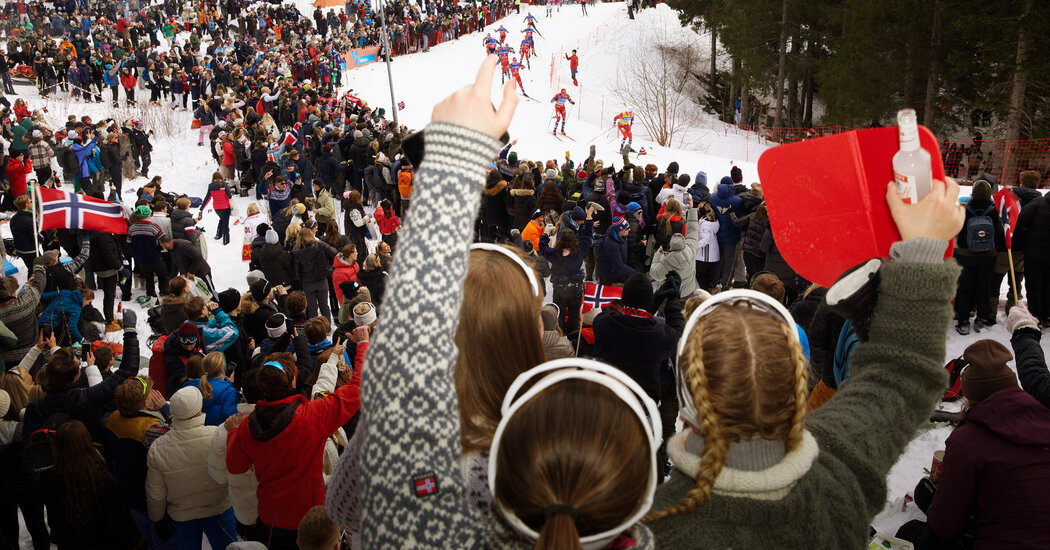OSLO — For two days before this year’s Holmenkollen cross-country ski races, Espen Garder took his remote meetings from a heated tent in the forest. Breaks came only for lunch and battery charging at a restaurant up the hill.
Garder, 53, had arrived early to claim a spot, not just for himself but also for the dozen Boy Scouts he leads. They would join him for the weekend, eager to sleep in the subfreezing temperatures along the five-mile racing loop.
Thousands more fans, no less excitable, would take day trips on Oslo’s metro system to pack Holmenkollen’s ski area for one of the world’s most improbable winter sports festivals, capped by a weekend of cheering, drinking and mania for cross-country skiing, which in Norway is something like a religion.
To picture the festival’s scale, and its vibe, think Scandinavian Super Bowl crossed with New York City Marathon: urban, Olympic-level competition, with spectators in wool sweaters and suspenders, campfires grilling hot dogs and enough beer and liquor for a small army.
Andrew Musgrave, a British cross-country skier who lives and trains in Norway, described it this way: “It’s like a bunch of Vikings going out and getting smashed in the woods and cheering on some people floating around on planks.”
Two 50-kilometer ski marathons — one for men and this year, for the first time, one for women — are the heart of the 10-day festival, which also includes biathlon and ski jumping competitions, plus a relay race for younger athletes. Outside the ropes, there’s something for everyone else: a massive, trail-side party for college students and recent graduates; a family area for quieter camping; a box for the royal family; and for fans focused on athletic performance, a grandstand in Holmenkollen’s ski stadium.
At their core, the cross-country events are celebrations of Norwegian values: hard work, persistence and tradition, according to Thor Gotaas, a folklorist whose 22 books on skiing have made him a minor Norwegian celebrity.
“It reflects the spirit of the people that survived in this country,” Gotaas said in an interview at his home in Oslo, two leisurely hours interrupted only by his occasionally feeding fresh logs into a roaring fire in his wood stove. A 50-kilometer race — just over 31 miles — requires more than technical skill, he said. “You have to be stubborn.”
While many of Holmenkollen’s traditions have endured, and winners still get an audience with Norway’s king, today’s…
Click Here to Read the Full Original Article at NYT > Travel…
